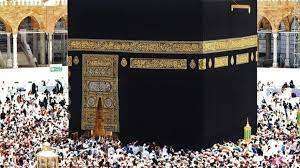MECCA, Saudi Arabia: As Islam’s holiest city gets ready to host the largest hajj pilgrimage since the coronavirus pandemic, white-robed worshippers from all over the world have crowded the streets.
Armed security forces guarded the historic city, the founder of the Prophet Mohammed, as banners welcoming the faithful—including the first foreign visitors since 2019—decorated squares and alleys.
Abdel Qader Kheder, a Sudanese pilgrim, told AFP in Mecca that the event, which is scheduled to begin on Wednesday, is “pure joy.” I almost find it hard to believe I’m here. Every second of it is fun for me.

After two years of drastically reduced attendance due to the pandemic, one million people, including 850,000 foreigners, are permitted at this year’s hajj, a central act of Islam that every able-bodied Muslim is required to perform at least once.
The authorities reported on Sunday that at least 650,000 foreign pilgrims have arrived in Saudi Arabia so far.
Around 2.5 million people participated in the rituals in 2019, which include circumambulating the Kaaba, the massive black cube inside the Grand Mosque in Mecca, congregating at Mount Arafat, and “stoning the devil” in Mina.
To prevent the hajj from becoming a super-spreader on a global scale, foreigners were banned the following year and the number of worshippers was limited to just 10,000, increasing to 60,000 fully immunized Saudi citizens and residents in 2021.
Under strict sanitary conditions, including ten times daily cleaning and disinfection of the Grand Mosque, Islam’s holiest site, one million immunized pilgrims under the age of 65 will perform the hajj.
According to the official toll, the rituals have been the scene of numerous disasters, including a 2015 stampede that may have killed up to 2,300 people and a 1979 attack by hundreds of gunmen that claimed 153 lives.


